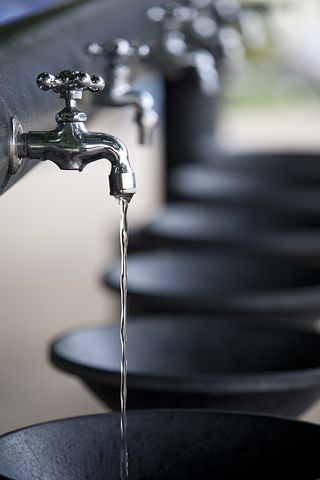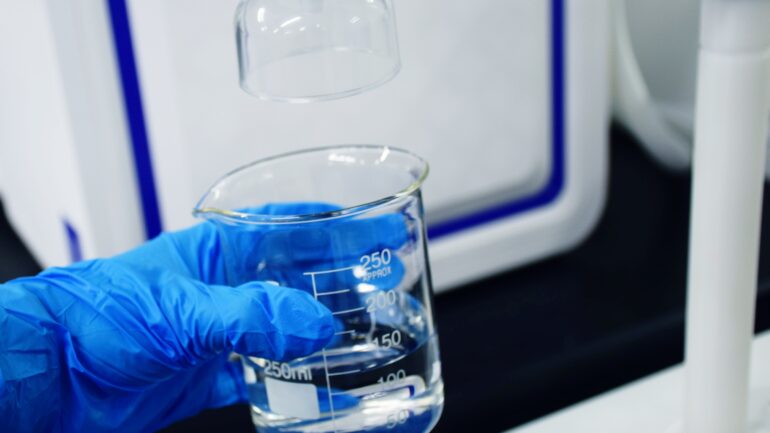Written by Geraldine Totesaut, Marketing Project Leader for Save The Water™ | May 5, 2017
As much as we might not like to readily admit it, the hard truth is that a lot of Americans take the country’s supply of drinking water for granted. Many of us do so in terms of tap water. We fall into the mistake of only paying attention to the threats of chemically-tainted water supplies only at times when the health of the community is at stake. Relating to lead poisoning and its obvious dangers, the attention of the entire country turned to the healthy lives of children in Flint, Michigan as being at risk.5 However, what most people do not know is that another similar story unfolds in other major parts of the United States of America with a chemical known as chromium.
As well as the rest of the United States, Florida is also facing a similar conundrum; news reports are in about contaminated drinking water throughout the state. Contaminated water, public health issues, and safety problems are beginning to alarm the residents of Tampa Bay. Recently, the Environmental Working Group published a study that showed drinking water in Tampa Bay contains levels of chromium measured far above the legal limit of the California Office of Environmental Health Hazards Assessment.7 Because of this, citizens have been put on high alert and have begun questioning their safety with every passing day that this news spreads.
What is Chromium?
In early 1993, a single mother by the name Erin Brockovich embarked on a mission to end the contamination of water in her local area by the Pacific Gas and Electric Company in California1. With her work, portrayed in the movie “Erin Brockovich,” she uncovered how this company had been poisoning the small town of Hinkley’s Water for over 30 years.7 This exact contaminant was chromium-6, a toxin linked with liver damage, reproductive complications, and impediments to development which were also caused cancer.7 Water supply outlets all over Tampa Bay contained this selfsame contaminant.7
Chromium-6 is a cancer-causing chemical that occurs naturally in the environment but industrial projects also produce a high amount of these contaminants.1 Then, chromium pollution occurs when these industrial sites fail to follow proper waste disposal methods, such as unlined coal ash ponds.4 According to David Andrews, a senior scientist at EWG, “the difficulty with chromium-6 is how to set a standard to protect human health during windows of development.”1 This chromium-6 will soon find its way into our drinking water. Found even in small amounts, chromium-6 can cause skin burns, pneumonia, complications during childbirth, and stomach cancer.1
Despite the evidence provided by the U.S. Environmental Protection Agency (EPA), the agency has not yet set a legal limit for chromium-6 in tap water.2 The Environmental Working Group analyzed data from water tests conducted all over the country in an attempt to assess the state of contaminants in drinking water.2 Due to these tests, it was demonstrated that chromium-6 contaminates the water supply of well over 200 million Americans all over the 50 states.7
Chromium levels in different States
In Florida, levels of chromium-6 deposits did not go beyond the federally allowed limit for consumption in drinking water, meaning that there will likely be no form of federal regulation on the issue. However, they exceeded the accepted level in California, which is 0.06 parts per billion, and the goal is to be set to 0.02 parts per billion.2 A senior scientist at EWG, Rebecca Sutton, claims that “hexavalent chromium is commonly discharged from steel and pulp mills as well as metal-plating and leather-tanning facilities [and pollutes] water through erosion of soil and rock.”6
According to the study of the EWG, 20 different parts of Florida have shown levels of chromium-6 deposits that exceed 0.02 ppb.3 Next, the affected regions include Brevard County, covering the cities of Palm Bay, Cocoa, and Titusville, as well as Marion County, which has the highest level of ppb, testing positive in all seven water systems, covering the cities of Ocala, Silver Springs Shores, and Marion Oaks. Below, some of the highest results in the state are provided:
- Brevard County, 0.0970 ppb
- Marion County, 1.20 ppb
- Volusia County, 0.107 ppb
- Sarasota County, 0.0316 ppb
Because of the prevalence of chromium-6, these companies should be required to reveal every location where chromium-6 was manufactured, used, or disposed of. People’s lives are at stake, and it is the time something tangible and substantial is done about it.
References
- Courtney Norris. September 21, 2016. “What is Chromium-6 and how did it Infiltrate America’s Drinking Water?” Retrieved from http://www.pbs.org/newshour/rundown/chromium-6-wash-many-drinking-supplies/
- Environmental Working Group. December 20, 2010. “Chromium-6 in U.S. Tap Water.” Retrieved from http://www.ewg.org/research/chromium6-in-tap-water
- Environmental Working Group. September 20, 2016. “Unregulated Contaminant Monitoring Rule 3.” United States Environmental Protection Agency. Retrieved from http://bit.ly/2d4DgyH
- John Heilprin. December 20, 2005. “Public Data Show Chemicals in Tap Water.” Environmental Working Group. Retrieved from http://www.ewg.org/agmag/2009/09/public-data-show-chemicals-tap-water
- Michael Wines & John Schwartz. February 08, 2016. “Many Cities at Risk of Lead in Drinking Water.” Miami Herald. Retrieved from http://www.miamiherald.com/news/nation-world/national/article59227723.html
- Rebecca Sutton. “Chromium-6 in U.S. Tap Water.” Environmental Working Group. Retrieved from http://bit.ly/2u4BZf3
- Sherri Lonon. September 25, 2016. “ICYMI: Some Tampa Bay Towns Have Drinking Water Toxin Made Famous by Erin Brockovich Study Finds.” Sarasota Patch. Retrieved from http://bit.ly/2fcxYCF





